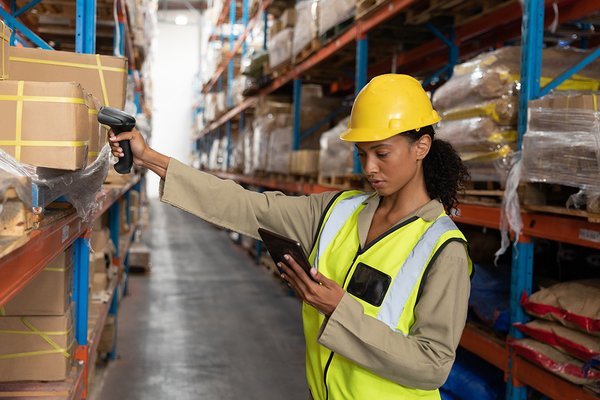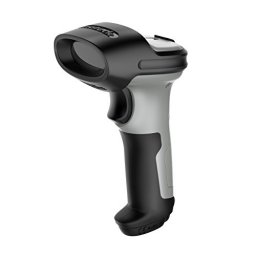Buying guide for Best barcode scanners
If you need a barcode scanner for your business, there's good news and there's bad news. The good news is that there are hundreds of different models available, each with a slightly different set of features. The bad news is that there are hundreds of different models available, each with a slightly different set of features.
To find the barcode scanner that’s right for you, it helps to understand a bit about how they operate and what the specific features enable them to do. After that, choosing the right model becomes a much easier task. For example, there are two main types of barcodes, but not every scanner can read both types. The right scanner for you is the one that can read the type of barcodes you use.
Key considerations
There are basically two types of barcode scanners. The problem is they can look exactly the same. It’s important to understand the difference between the two or you may end up with a scanner that doesn’t work with your barcodes.
Laser scanner
Like it sounds, a laser scanner uses a laser along with a reciprocating mirror or rotating prism to scan barcodes. The laser moves from side to side, registering not only the width of the black bars but also the white space between them. It does this by registering the amount of light reflected back to the unit: white reflects light while black absorbs it. Since the process involves delicate moving parts, these scanners need to be tough and impact resistant. If your laser scanner isn’t rugged, the first time you drop it could be the last time you use it.
Image scanner
The easiest way to explain an image scanner is to think of it as being like the camera on your phone. While that isn’t precisely how it functions, it does focus on why it differs from a laser scanner. Since a laser scanner scans from side to side, it can only determine how wide and how far apart the bars are. An image scanner can read left to right as well as up and down, so it can interpret a whole image. Additionally, an image scanner is better at interpreting worn or damaged barcodes, and it can read images off a screen, which is essential for customers who prefer to use coupons on their smartphone instead of printing them.
The initial barcode design was in the shape of a bull’s-eye. Unfortunately, that design proved impractical due to the limitations of technology at the time.
Staff
BestReviews
Features
Wired vs. wireless
If all the items that need to be scanned are brought to you, such as at a checkout register, you can save money by choosing a barcode scanner that plugs directly into your laptop or computer. However, in most instances, you’ll need a portable barcode scanner that utilizes either Bluetooth or WiFi technology.
Range: All wireless technology, whether Bluetooth or WiFi, has a maximum range. When considering a barcode scanner, remember that there are a number of factors, such as walls, other WiFi devices, and stacks of inventory, that can reduce that maximum range. Be certain the barcode scanner you’re considering has the range you need in your workplace.
Functions
Auto-sensing: This feature is typically found on a fixed or desktop unit, such as you might find at a self-service checkout station in a grocery store. These models don’t require that the user activate them; they’re always ready to scan. In order to operate one of these scanners, you simply move the barcode into the unit’s field and it automatically scans.
Internal storage: Many barcode scanners have internal storage. If you’re doing inventory, the information is stored in the handheld scanner so you can upload it to a computer later. This fail-safe feature can eliminate a lot of frustration. If your barcode scanner has internal storage and you accidentally move out of range, you won’t lose your scans. It also allows you to work offline, which, in many instances, means you can work much more quickly.
Pairing: If you have a large warehouse and several people working on the same task, you want to have the ability to pair several barcode scanners to one device so all the information gathers in one place.
Modes: As you move up in price, a barcode scanner functions more like a portable computer. It may feature a variety of modes, such as inventory and price check, that allow you to accomplish a specific task more easily.
Design
Ergonomic: You could be using a handheld scanner for hours at a time. The ideal model is lightweight and ergonomically designed so it feels comfortable and well balanced in your hand.
Durable: Besides being able to survive the inevitable knocks and drops, a barcode scanner needs to be built so dust can’t get inside and diminish its functionality.
Did You Know?
A laser scanner isn’t able to read an image on a phone screen, even if it’s a 1D image.
Staff
BestReviews
Barcode scanner prices
Inexpensive: As technology advances, the price tends to drop. It’s possible to get a barcode scanner for as little as $20. These models are wired and limited in scope, but if this suits your needs, one of these could be the barcode scanner for you.
Mid-range: You can find a wide variety of scanners between roughly $40 and $150. For the most part, these are handheld, wireless barcode scanners. Once you pass $50 or $60, many have the ability to scan both 1D and 2D barcodes. Toward the higher end of this price bracket, the models may come with a stand so they can function as stationary scanners.
Expensive: Once you get into the $200 range, you’re moving into rugged units that are built to withstand impacts from accidental drops. As you move into the $500 and up range, the barcode scanners are more like portable computers, giving you the ability to perform a number of operations besides merely scanning.
The first functioning barcode scanner was the size of a refrigerator and used to track railroad cars.
Staff
BestReviews
Tips
- Check the distance. Barcode scanners have an ideal scanning distance. If the barcode is too close or too far away, it might not scan.
- Check the scanner configurations. Most barcode scanners need to be configured. If you’re having trouble scanning, make sure your barcode scanner is properly configured for your precise needs.
- Check the barcode. Products often contain multiple barcodes, especially in retail. Be certain the one you’re scanning is the one your scanner can read. Also, if your barcode scanner can scan multiple types of barcodes, make sure it’s set correctly. If the barcode you’re trying to scan is faded or marred in any way, it might not scan. Sometimes, a barcode is just tough for the scanner to read. This could be caused by a number of factors, such as the barcode being too small, being in color, or not having ample space around it.
- Check the angle. A laser scanner can only scan when it’s even with the barcode or perpendicular to it. If you try scanning at a 45° angle, it won't work. If there’s clear tape over the barcode, the scanner can still function, but if there’s glare, the scanner might not work. Angle the barcode to eliminate the glare.
- Check the conditions. Dust, low light, or condensation might make it difficult for your scanner to read a barcode.
- Check the battery. As simple as it sounds, if your wireless barcode scanner suddenly stops scanning, the battery might be dead.
FAQ
Q. Why do some barcodes look like a series of parallel lines while others look like a pixelated grid?
A. The barcode that is made up of parallel lines is a 1D barcode. These barcodes can have as many as 25 characters, but most are typically shorter so the barcode isn't too wide. A 1D barcode has information in one direction: horizontally, left to right. With a 2D barcode, the information is organized both horizontally and vertically. Because of this, 2D barcodes can contain much more information in a much smaller space. A 2D barcode can hold up to 2,000 characters.
Q. Can a barcode scanner read both 1D and 2D barcodes?
A. It depends. The answer is no if you have a barcode scanner with a laser. A laser scanner simply scans left to right, so it can only recognize the information on a 1D barcode. If you have an image scanner, it functions more like a digital camera. An image scanner captures the 2D barcode and translates the entire image into a string of data. An image scanner can also accurately interpret a 1D barcode. In short, a laser scanner only reads 1D barcodes while an image scanner is capable of reading both 1D and 2D barcodes.
Q. Is a laser barcode scanner dangerous?
A. A barcode scanner uses a low-level Class II laser. It’s considered safe for most individuals because the radiation level is low and the typical response is reflexive only: blinking or looking away. However, some individuals’ eyes are more sensitive to light, they may wear corrective lenses that intensify the beam, or they may suffer a seizure when exposed to flashing light. Because of this, a barcode scanner should never intentionally be aimed at anyone's eyes.






















